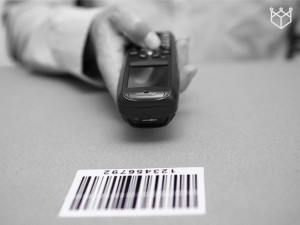 Consumers may ignore them, but businesses understand the importance of choosing the right barcode system for their products. Beneath the small, black and white marks on product packaging lies a complex system of data tracking, measurement, storage and more.
Consumers may ignore them, but businesses understand the importance of choosing the right barcode system for their products. Beneath the small, black and white marks on product packaging lies a complex system of data tracking, measurement, storage and more.
The importance of barcode systems
Barcodes have long proven themselves to be an extremely effective method of inventory management, pricing and logistics tracking for retailers and wholesalers. They help any business that operates within the supply chain better manage their logistics efforts.
The information contained within a barcode is not simply a method of purchase for consumers, its benefits for business supply chains include:
- Increasing supply chain visibility through the comprehensive tracking of products.
- Managing inventories with accuracy.
- Identifying buying trends of consumers.
- Providing a valuable source of information that can alter key performance indicators.
When choosing a barcode system, businesses should consider the following factors:
The types of products sold
The initial choice comes down to whether or not businesses should print barcodes on labels or directly onto product packages and the choice is entirely contingent upon the product being sold.
The size, packaging and other factors of products all play into the type of barcode and barcode system that is able to used. Some products are too small for traditional barcodes, while others are far too large. Some products like clothing need tags to be attached to them, rather than sticky labels or barcodes that can be printed directly onto the packaging.
If a business is considering printing their own barcode labels, they will have to become a member of GS1 US, the organization that assigns unique UPC barcodes to companies.
The type of barcode needed
Beyond the barcode system, there is also the choice of which type of barcode to place on a product. The one dimensional (1D) barcode is one of the most commonly used barcode for retailers, especially for small businesses. These barcodes are identified by the black lines complete with a set of letters and/or numbers underneath them.
The other choice for retailers is the two dimensional barcode, which is commonly represented by QR and Datamatrix codes.
There are more than a dozen major 1D barcodes, and several more to consider when adding in the possibility of 2D barcode choices. Choosing the right one depends on where the goods will be sold (U.S. vs. International or both), which industry the company is a part of and several other factors.
Businesses can learn a lot more about the different types of 1D and 2D barcodes here.
Finding the right 3PL
Choosing a barcode is just one of the major decisions companies have to make when it comes to the products in their supply chain. Shippers must also take into account carriers, warehousing and much, much more. That’s why it’s often essential to partner with a 3PL that has relationships throughout the supply chain. At King Solutions, our customer service is second to none. Don’t believe us, contact us today to speak to a member of our team.








 Joel Rice
Joel Rice